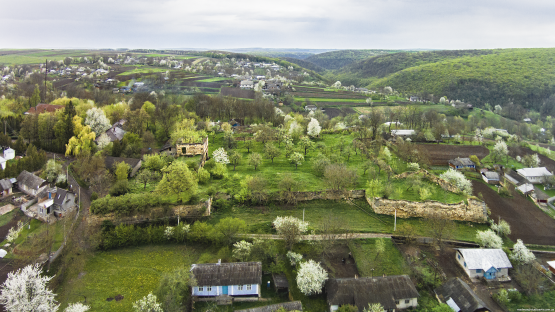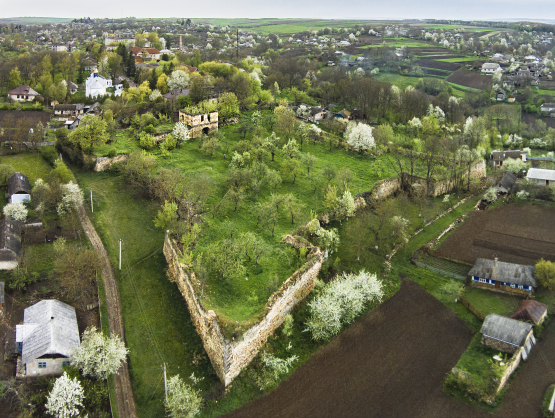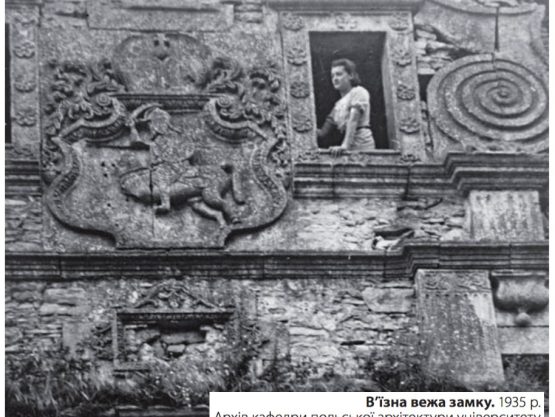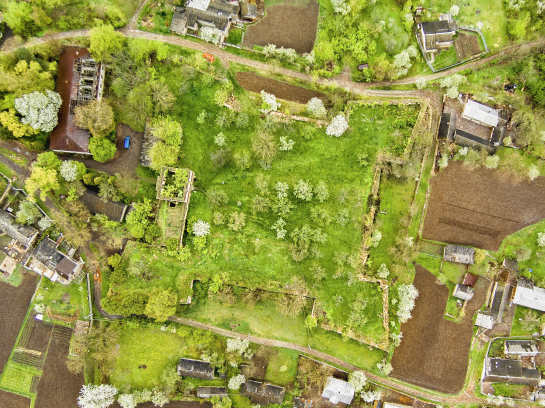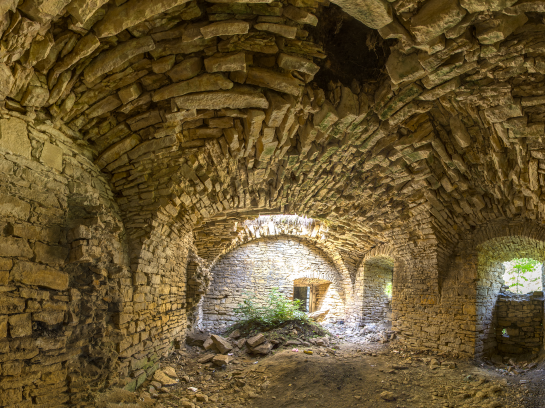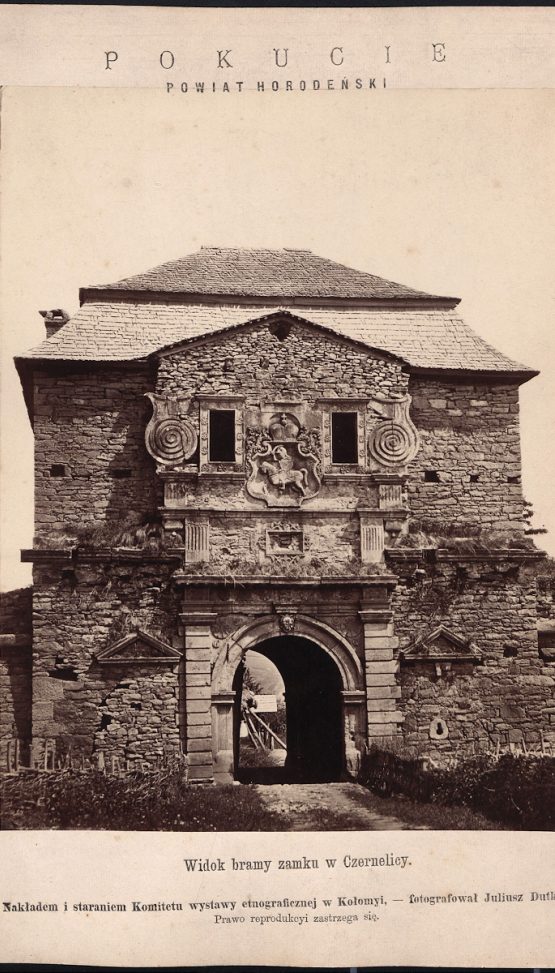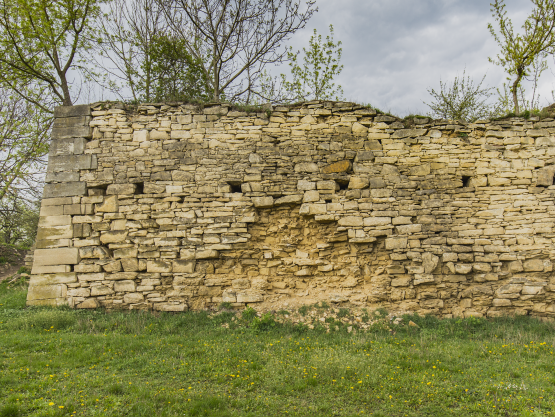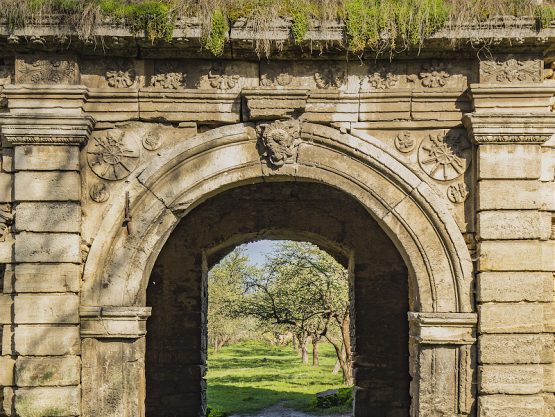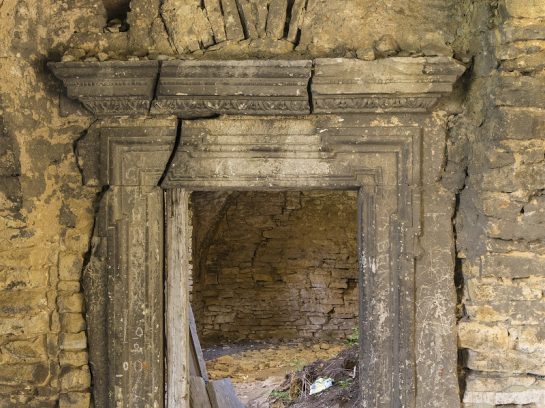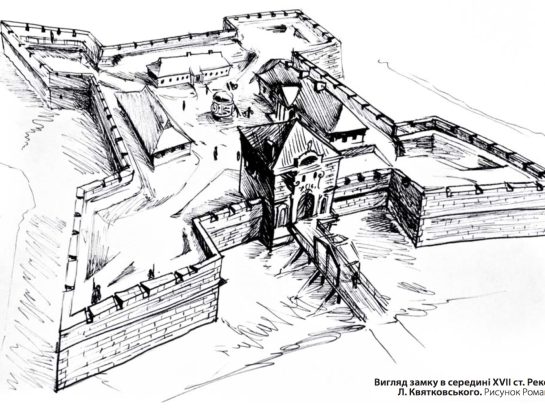Chernelytskyi Castle
Foundation
Chernelytsia is an urban-type settlement located on the right bank of the Dniester River in the Horodenkivskyi district of Ivano-Frankivsk region, about 22 km from the district center and 65 km from the regional centers.
The remoteness from the main roads, both national and regional, has led to the fact that Chernelytsia is rarely mentioned in tourist guides. However, the history of the Pokutsk village is quite rich in events, and the settlement itself has preserved many historical monuments that are worth visiting. Among them are the Old Russian settlement of the 11th century, the bastions and the entrance tower of the castle of the first half of the 17th century, the ruins of the Roman Catholic church of 1661, the remains of the Racibórski chapel of the mid-19th century, the Greek Catholic Church of the Blessed Virgin Mary of 1817, the ruins of a Jewish synagogue, and the remains of Austrian defensive fortifications from the time of the First World War. Our story will be about Chernelytsia Castle.
The beginning and main stages of the construction of the castle.
Some historians trace the earliest traces of fortifications on the territory of today's Chernelytsia back to documents from the mid-15th century. The basis for this statement is the act of division of possessions between Mykhailo and Jan Buchatsky dated May 11, 1469, which lists the Pokuttya and Podolsk estates, along with "fortalicimus", including Chernelytsia. However, the construction of the sentence and the form used in the document, "with cities, defensive yards and villages", make it possible to attribute these words not so much specifically to Chernelytsia, but in general to all the localities listed in the deed document. Therefore, it is impossible to establish exactly in which of the indicated settlements there could have been defensive yards or watchtowers.
Therefore, on this basis, we cannot claim that in the middle of the 15th century there were defensive fortifications in the form of a castle in Chernelytsia. Other acts of the Galician Grodsky Court, dated 1490, do not mention anything about the probable fortifications of Chernelytsia. Similarly, we do not find any information about the castle in the descriptions of the possessions of the Buchatsky and Yazlovetsky families of the 16th - early 17th centuries, to whom Chernelytsia belonged during this period. As we can see, the preserved sources do not allow us to date the beginning of the construction of the Chernelytsia Castle to the 15th century.
In historical literature, the most common thesis is that the castle was founded in the first decades of the 17th century. However, some authors date this event to the first half of the 17th century or, more broadly, to the entire 17th century. However, preserved archival documents specify the date of the beginning of the castle's construction. Thus, among the acts of the Galician Zemstvo Court, we find a complaint by the then owner of Chernelytsia, Jadwiga Belzecska of Yazlovetsky, against her son-in-law, the Kiev voivode Janusz Tyszkiewicz, who in 1636 attacked and robbed his mother-in-law's estate. Jadwiga complained that J. Tyszkiewicz had destroyed the towns of Yazlovets, Gorodok, Zalishchyky, as well as Chernelytskyi Klyuch and the “town of Chernelytsia with the castle.” This document is the first known written mention of the castle in Chernelytsia. Thus, in 1636, the construction of a fortress in the Pokuttya town had already begun.
Czernielytskie Castle is a striking example of Renaissance architecture, which combined defensive functions with the elegance and aesthetics of the era. The castle had the shape of a square bastion with four corner towers, which provided circular defense. Its walls were up to 2 meters thick and had several tiers of loopholes for shooting. In the center of the castle was the palace, which served as the residence of the Czartoryskis. The palace was decorated according to the best traditions of the Polish nobility of that time, reflecting the status and wealth of its owners.
However, history was not kind to the Černilice Castle. In the 18th century, during the conflicts associated with the Polish liberation wars and the offensive of Turkish troops, the castle suffered significant damage. In particular, after the Battle of Żurawno in 1676, in which the Polish-Lithuanian Commonwealth was defeated by the Ottoman Empire, the castle was partially destroyed. Later, due to political changes and the weakening of the defensive role of castles, the Černilice Castle began to decline. At the end of the 18th century, after the partitions of Poland and the inclusion of Galicia into the Austrian Empire, the castle lost its strategic importance and gradually turned into a ruin. Despite this, even in its current neglect, the Černilice Castle retains important cultural and historical value, being a witness to the turbulent events of the past.
In the 20th century, Chernilytskyi Castle continued to decline. After World War I and the Polish-Ukrainian War of 1918-1919, the castle territory became part of the Polish Republic, but no serious restoration work was carried out. During and after World War II, the castle again found itself in a zone of conflicts and changes of power, which further accelerated its destruction.
During the Soviet period, the castle did not receive due attention, and its remains began to be used by local residents as building material. Only in the late 20th and early 21st centuries did the castle attract the attention of researchers and enthusiasts, who began working to preserve what remained. Today, Chernelytskyi Castle is in ruins, but it is a cultural heritage site that attracts the attention of tourists and historians. Local communities and cultural organizations periodically organize events to preserve this important historical site, excavations and partial restoration work are carried out, aimed at preserving its authenticity and popularizing it among a wider audience.
Information and photos taken from https://uaaheritage.blogspot.com/2023/12/2016-1_27.html

